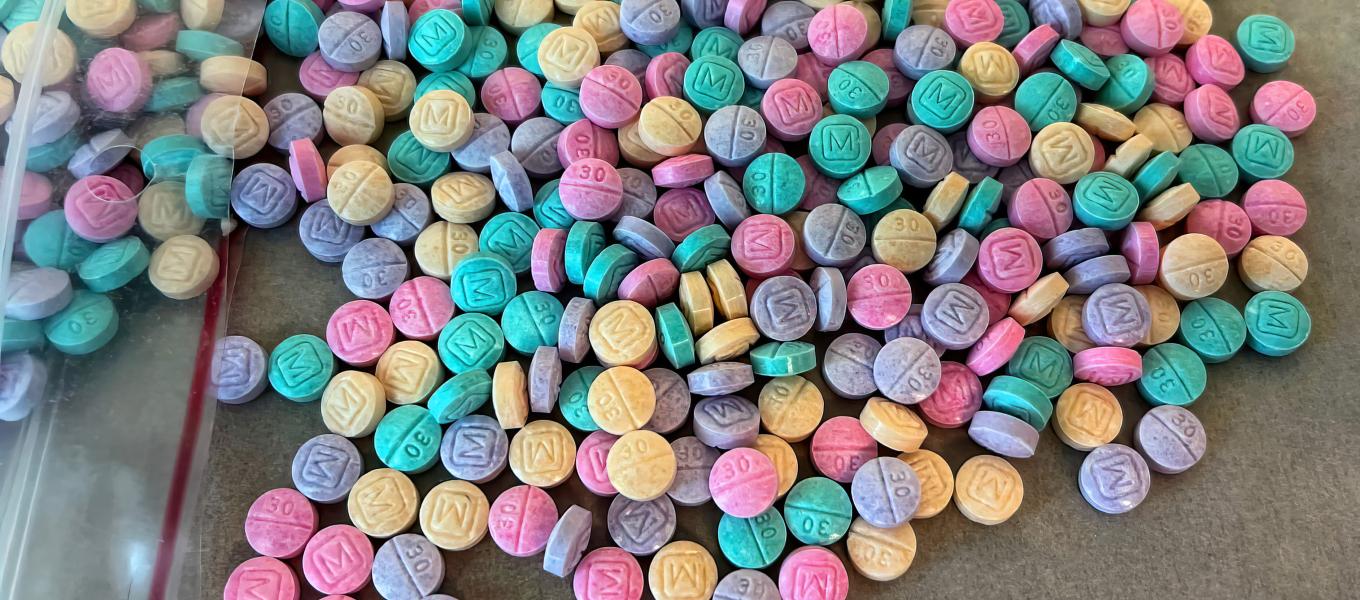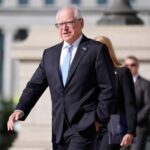

A public awareness campaign aimed at teaching teenagers about the dangers of buying knockoff items online pivoted from its original intent to blitz the airwaves about the dangers of counterfeit fentanyl, now the top killer of young adults in the country.
The United States Patent and Trademark Office and the nongovernmental organization the National Crime Prevention Council launched the “Go For Real” campaign in 2019 to inform children and teenagers to look out for and avoid fake versions of designer handbags, professional sports gear, and the like.
But several years into that campaign, the government and nonprofit officials running the effort have chosen to shift messaging to focus increasingly on pills that can kill, including fentanyl.
NCPC Executive Director Paul DelPonte said he began hearing from parents three years ago about deaths of children to the drug, which led him to realize the time was now to tackle educating the public on the dangers of fentanyl.
“After now talking to hundreds of hundreds of parents, the story is hauntingly familiar. The child is having a bad week, a bad month. … They talk to a friend, and they say, ‘Oh, you can get a Percocet, you can get a this or that.’ ‘Oh, I don’t have a prescription for that.’ ‘Oh, you can get it on social media,’” DelPonte told the Washington Examiner in an interview by phone on Monday.
Once on social media platforms, people can order the drug they want to be delivered by mail as easily as ordering fast food for delivery through an app. The difference is that the drug can be filled with anything and often is not the highly regulated pharmaceutical drug the buyer believes it is.
“You wait until everybody goes asleep, go to your bedroom … 10-15 minutes later, the child’s dead. Parents wake up the next morning. They are bewildered — they have no idea what goes on,” DelPonte said. “A couple weeks later, the autopsy report comes in and shows it’s fentanyl. The child has never had a drug problem. The family is just totally flabbergasted and caught off guard. And I’m told that story time and time again. It’s just heartbreaking.”
Fentanyl, a legitimate pharmaceutical drug reserved for rare situations, has been knocked off by Chinese chemical suppliers and Mexican cartel manufacturers in recent years.
More than 6 billion possibly lethal doses of fentanyl were seized by federal law enforcement at the border in the government’s 2023 year, which ended in September 2023. It was enough to kill all 330 million people 18 times — but plenty more has made it into the country undetected.
The latest Centers for Disease Control and Prevention data indicated that 109,000 people died from drug overdoses in 2022, with 70% of deaths tied to a synthetic opioid such as fentanyl. Deaths in which the user did not know he or she was consuming or injecting fentanyl are increasingly referred to as poisonings rather than overdoses.
Because fentanyl can be made year-round and smuggled into the U.S. in small doses, drug cartels have flocked to trafficking it into the country instead of drugs like marijuana and cocaine. They also use it as the main ingredient in fake prescription pills that make their way into the U.S., and they look identical to real prescription sedatives, including Xanax, Percocet, and Oxycodone.
In late 2022, the NCPC shifted in its approach to become “more activist,” DelPonte said.
The Go For Real campaign continues to use the decades-old PSA giant McGruff the Crime Dog to get its message out and has partnered with NASCAR, Disney’s Chip ‘n Dale Rescue Rangers, and the TV show Family Guy.
CLICK HERE TO READ MORE FROM THE WASHINGTON EXAMINER
It recently hosted 20 well-known teenage and young adult influencers at a murder mystery party in Los Angeles, at which the guests were shocked to find out the killer was a fentanyl pill. The influencers posted videos on their personal accounts to help get the word out to their peers. DelPonte said it was a fresh approach to reach a broad array of people who may not see ads on TV and radio.
Asked how the NCPC is grading itself on its campaign, DelPonte said the campaign had been seen 2 billion times in 21 months on TV and radio, which does not include its pages on social media.






